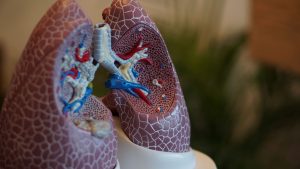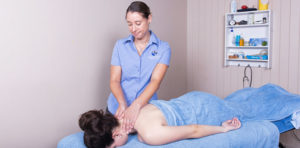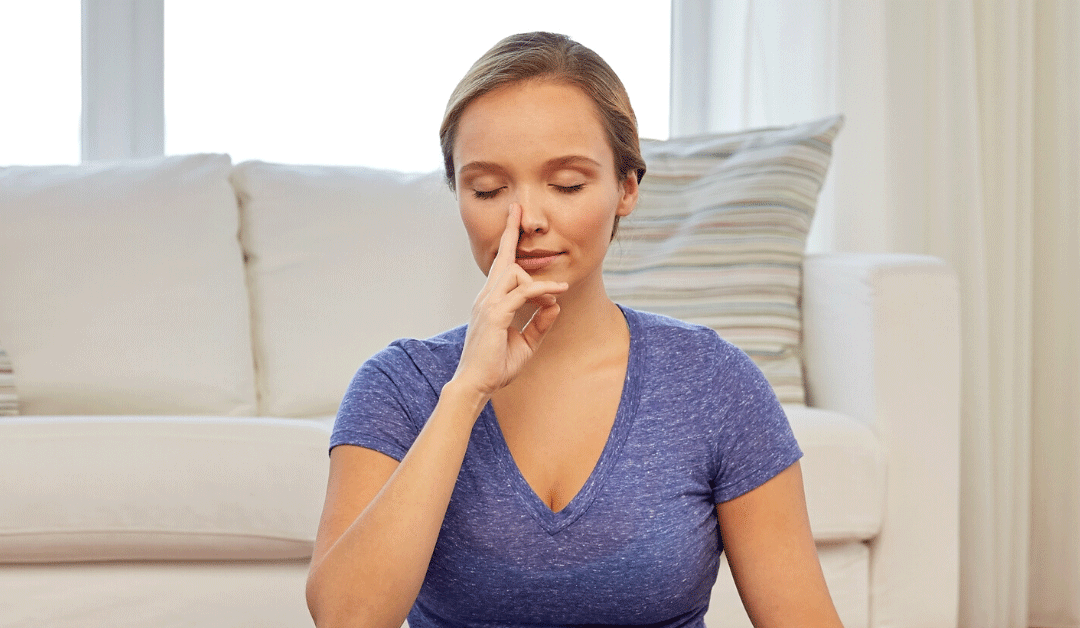As we head into winter with COVID-19 and other various flus and bugs among us there has never been a more important time to be on top of our health, especially any respiratory conditions that can escalate into a much more serious illness.
What Makes Up The Respiratory System?
The respiratory system brings oxygen into the body and helps to remove carbon dioxide. Problems with the respiratory system can reduce the oxygen that reaches the lungs, which can lead to illness.
Your respiratory system is made up of the:
- nose
- pharynx
- larynx
- trachea (windpipe)
- bronchi (branching from the trachea, and leading to smaller bronchioles)
- lungs
Respiratory Conditions and Pneumonia
 In the lungs, air sits in small air sacs called alveoli, which are right next to blood vessels. Oxygen travels from the alveoli into the bloodstream, and carbon dioxide travels the other way from the bloodstream into the alveoli. It is then exhaled.
In the lungs, air sits in small air sacs called alveoli, which are right next to blood vessels. Oxygen travels from the alveoli into the bloodstream, and carbon dioxide travels the other way from the bloodstream into the alveoli. It is then exhaled.
If the lungs become inflamed due to respiratory illness, it may make it tough to breathe and can lead to pneumonia. If a person has pneumonia, the alveoli in one or both lungs fill with pus and fluids, which interferes with exchanges of oxygen and carbon dioxide.
Signs & Symptoms of a Respiratory Issue
People who suffer from respiratory diseases or are having difficulty breathing may experience:
- Shortness of breath
- Rapid, shallow breathing
- A feeling of inability to get enough air into your lungs
- Wet cough
- Difficulty clearing airways
- Movement of the upper chest with minimal to no expansion of the lower ribs
Can Physiotherapy Help?
 There are physiotherapy treatments that are specifically targeted towards issues in the lungs. Physiotherapists are trained in a number of techniques to improve lung function. A trained Physiotherapist will assess your condition and where appropriate, employ techniques to assist your respiratory concerns.
There are physiotherapy treatments that are specifically targeted towards issues in the lungs. Physiotherapists are trained in a number of techniques to improve lung function. A trained Physiotherapist will assess your condition and where appropriate, employ techniques to assist your respiratory concerns.
PLEASE NOTE: if you currently have any symptoms of Covid-19, you are not able to attend our clinic and must consult your GP and undergo testing immediately. You can also undertake the Qld Health Quiz or call 13health for more assistance.
What Techniques Can a Physiotherapist Use?
- Breathing techniques can be used to assist those who have difficulty inflating their lungs, and ensure they are breathing correctly as inefficient breathing could affect their ability to inhale or exhale air. This, in turn, affects the bodies ability to utilise oxygen transport in the lungs.
- Specific positioning can be used to target better inflation of the lung area. It can also be used to assist with draining of mucus from targeted areas of the lungs. A physiotherapist can advise which positions are best.
- Percussion techniques are used to assist the break-up of thick and sticky mucus as well as clearing any mucus plugs that might be causing issues with lung inflation.
- Airway clearance is the ability to effectively clear mucus from the lungs. The body has tiny hairs in the lungs called cilia that assist in mobilising secretions towards the mouth for clearance. Breathing and huff techniques can be used to target either the lower or upper airways to aid in the removal of unwanted mucus or particles. Coughing then assists in clearing the upper airways.
What exercises can I do at home to relieve my symptoms or strengthen my diaphragm?
Relaxed deep breathing and prolonged breathing out exercises at home may help to improve your condition by strengthening the diaphragm and assist getting more air into your lungs.
Sue’s Top Tips –
One of the easiest ways to increase your depth of breathing is called demand ventilation. You perform a few safe, low level exercises designed to make you have to take deeper breaths. The safest and most basic exercise to start with is a sit-to-stand exercise. Sit on the edge of your bed, make sure that before you start you’re not feeling lightheaded. Then stand up and sit back down. Repeat 3 – 5 times. Another easy exercise is walking up and down your hallway or as a progression, your stairs. Again, safety first. Cease any of these if you start to feel unwell and always have chairs nearby if you need to sit down.
The key to breathing exercises is to focus on the breath out, not the breath in. Gently exhaling for as long as you can without coughing is going to open your airways most effectively, allowing air to flow back in and hopefully get in behind the mucous lining your airways. Some easy exercises to help you focus on breathing out include blowing on a pinwheel; moving a ping pong ball along a table blowing through a straw; or treating yourself to a thickshake and doing what your mother always told you to not to do, and blow back into it creating bubbles!
Please note, if you have a respiratory condition (outside of Covid-19), it is best that we assess you before recommending any at home exercises. This way we can decide if the potential benefits of exercise outweigh the risks for you, this might be in consultation with your doctor or health specialist.
If you would like to request a consultation to speak to a Physiotherapist about your respiratory condition you can call us on 3869 1099 or book online.

